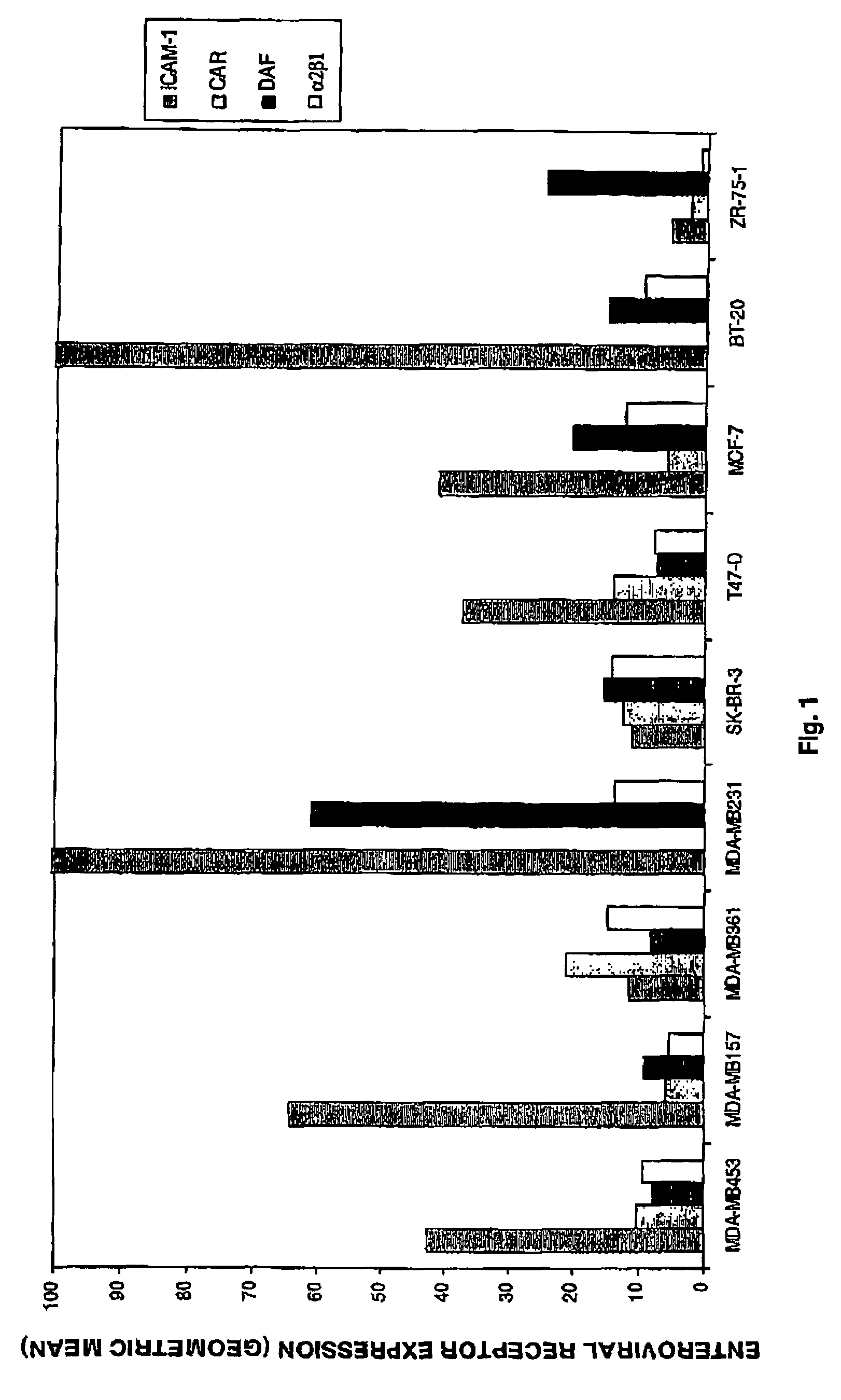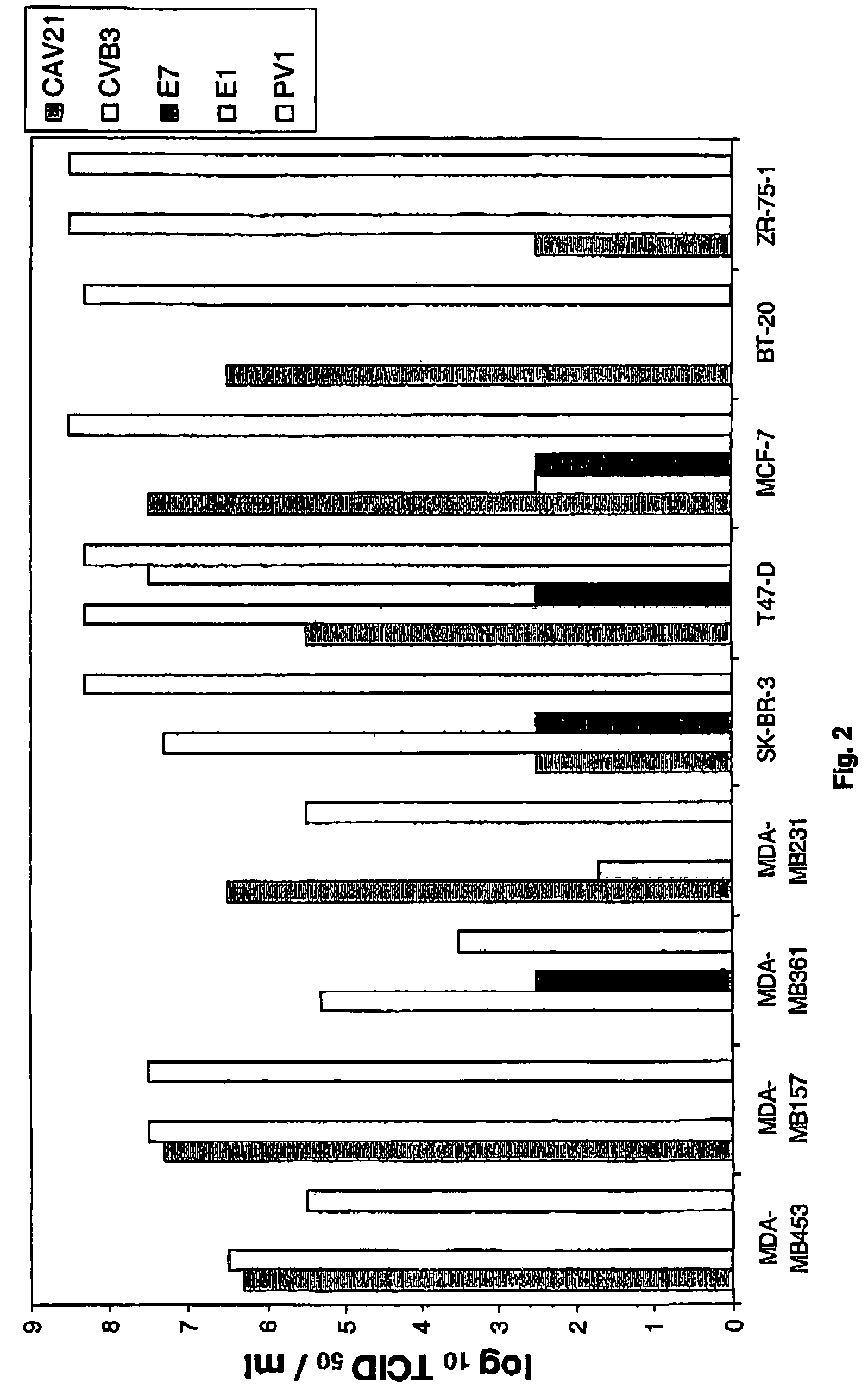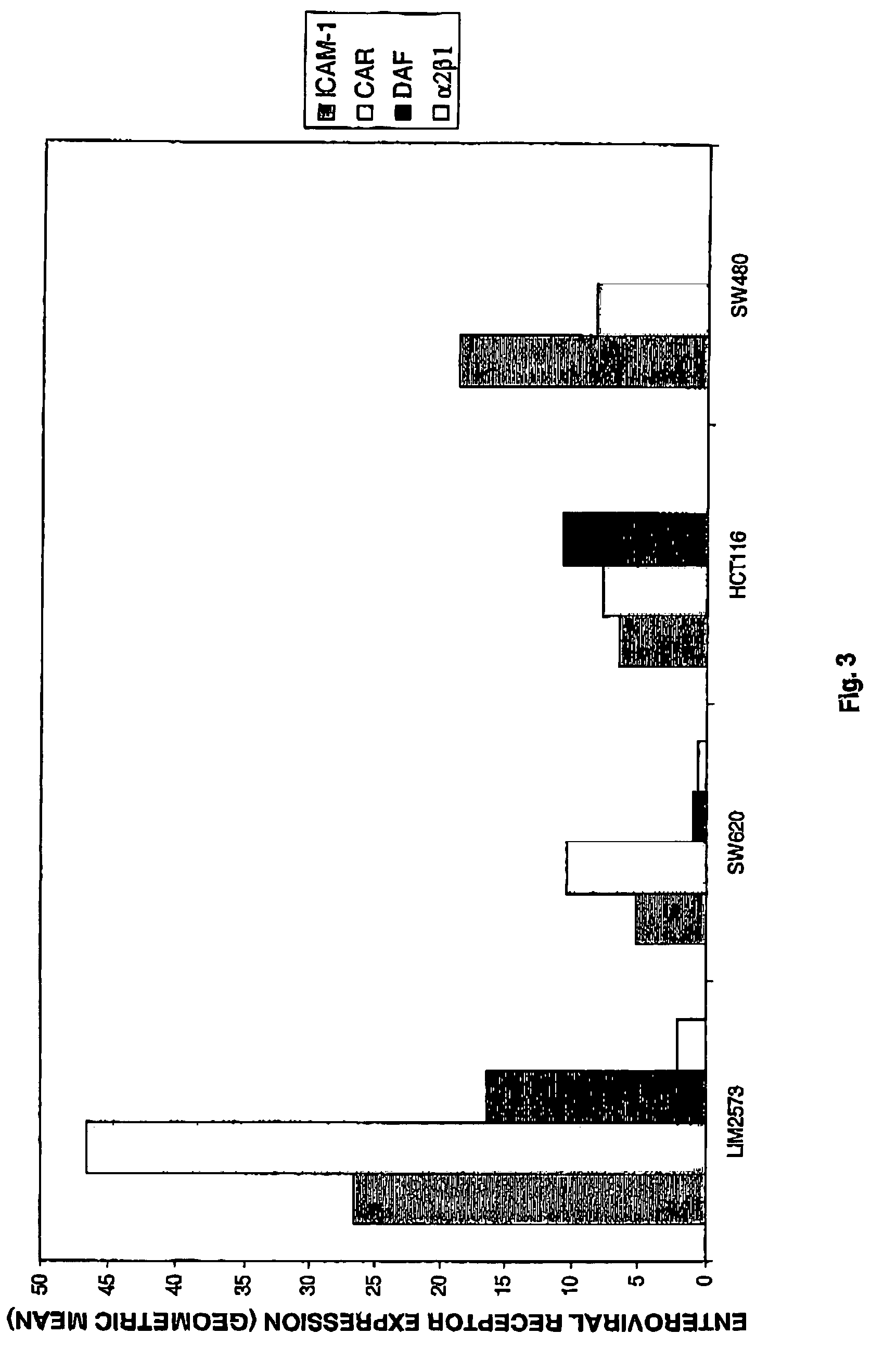Method of treating a malignancy in a subject via direct picornaviral-mediated oncolysis
a technology of picornaviral and oncolysis, which is applied in the direction of antibody medical ingredients, drug compositions, immunological disorders, etc., can solve the problems of ovarian malignancies that present a major challenge and the benefit of prophylactic oophorectomy has not yet been established
- Summary
- Abstract
- Description
- Claims
- Application Information
AI Technical Summary
Benefits of technology
Problems solved by technology
Method used
Image
Examples
example 1
Materials and Methods
1.1. Cell Lines
[0095]IGROV-1, A2780, DU145, PC3, AsPC-1, PANC-1, T47-D, MDA-MB361, MDA-MB453, MDA-MB231, and MCF-7 cancer cell lines were obtained from the Garvan Institute, Sydney, New South Wales, Australia. BT-20, MDA-MB157, SK-BR-3, ZR-75-1, HCT116, LIM2537, SW480, SW620, 2008, JAM, OVCA-429, OVCAR-3, OVHS-1, OWA-42, SKOV-3, and DOV13 cancer cell lines were obtained from Peter MacCullum Cancer Institute, Melbourne, Victoria, Australia. SkMel28 Cells were obtained from Dr Ralph, Department of Biochemistry and Molecular Biology, Monash University, Victoria, Australia. HeLa cells were obtained from Margery Kennett, Entero-respiratory Laboratory, Fairfield Hospital Melbourne, Victoria, Australia. All cells were cultured under standard conditions (37° C. in a 5% CO2 atmosphere) in RPMI containing 2-5% Fetal Calf Serum (FCS) and antibiotics excluding BT-20 cells which were cultured in α-CMEM media, and SkMel28 and HeLa cells which were cultured in DMEM media. All ...
example 2
Viral Mediated Oncolysis of Cancer Cell Lines
2.1 Expression of Enterovirus Receptors on the Surface of Breast Cancer Cells
[0111]To determine the relative expression levels of selected enteroviral cell surface receptors used by enteroviruses flow cytometric analysis was performed. The selected group of receptors consisted of ICAM-1 employed by CAV21; DAF employed by EV7, CAV21, CVB3; CAR used by CVB3; and integrin α2β1 used by EV1. Due to the unavailability of Mab against the PVR receptor, no expression levels of PVR were determined.
[0112]Nine breast cancer cell lines were analysed including BT-29, MCF-7, MDA-MB157, MDA-MB231, MDA-MB361, MDA-M453, SK-BR-3, T47-D and ZR-75-1. The cell lines were incubated with either anti-ICAM-1 (IH4), anti-CAR (RmcB), anti-DAF (VIIIA7) or anti-α2β1 (AK7).
[0113]ICAM-1 expression was significant in six of the nine lines while DAF appeared to be expressed at relatively low levels in all the cell lines. Moderate levels of CAR expression were evident on s...
example 3
Specificity of Echovirus (EV2) Lytic Infection
3.1 Relative Pathogenicity of EV1
[0131]The relative pathogenicity of EV1 on in vitro cultures of non-malignant ovarian cells compared to neoplastic cells was investigated. Normal human ovarian surface epithelial (HOSE) cells immortalised using human papillomavirus 16 E6-E7 open reading frames (Tsao, S. W. et al., 1995), together with a dear cell ovarian carcinoma line (OVHS-1) and undifferentiated ovarian carcinoma cells (DOV13) were challenged with input multiplicities of EV1 ranging from moi 5.0 to 0.05 TCID50 / cell. At 48 h post-infection microscopic examination revealed gross cell destruction and cytolysis in monolayers of both ovarian carcinoma lines, even at a viral challenge of as low as 0.05 TCID50 of EV1 per cell. In contrast, no detectable changes in the cell morphology of the HOSE cells were observed even at the highest viral challenge dose.
[0132]In a further effort to the deter e the specificity of the EV1 infection, normal pe...
PUM
| Property | Measurement | Unit |
|---|---|---|
| time | aaaaa | aaaaa |
| pH | aaaaa | aaaaa |
| volume | aaaaa | aaaaa |
Abstract
Description
Claims
Application Information
 Login to View More
Login to View More - R&D
- Intellectual Property
- Life Sciences
- Materials
- Tech Scout
- Unparalleled Data Quality
- Higher Quality Content
- 60% Fewer Hallucinations
Browse by: Latest US Patents, China's latest patents, Technical Efficacy Thesaurus, Application Domain, Technology Topic, Popular Technical Reports.
© 2025 PatSnap. All rights reserved.Legal|Privacy policy|Modern Slavery Act Transparency Statement|Sitemap|About US| Contact US: help@patsnap.com



